(various 1/72 kits)
[ Page 10 ]
1/72 scale kits of the Mikoyan Gurevich MiG-21
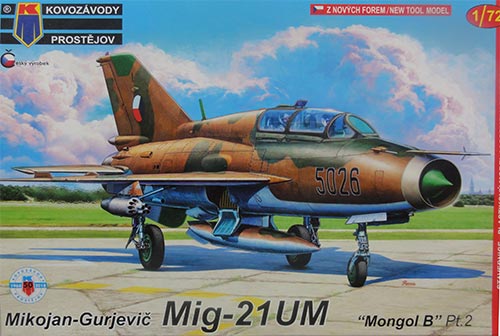
The new brand re-instated Kovozavody Prostejov also released a nice kit #KPM032 in 2019 of the two seater trainer MiG-21 UM. NATO code name "Mongol B". The UM is the trainer for the MiG-21.
The kit has some parts similar as the RV Models single seat MiG-21 kits. Some RV Models MiG-21 kits were built previously, see page 2...
There are about 75 parts. No locating assembly pins are moulded and no part numbers, so refer to the small instruction diagram. You get a new sprue in the "new KP" kit with the two seater fuselage and a new transpent canopy sprue. Nice is a separate "single piece" canopy if you want to set this closed.
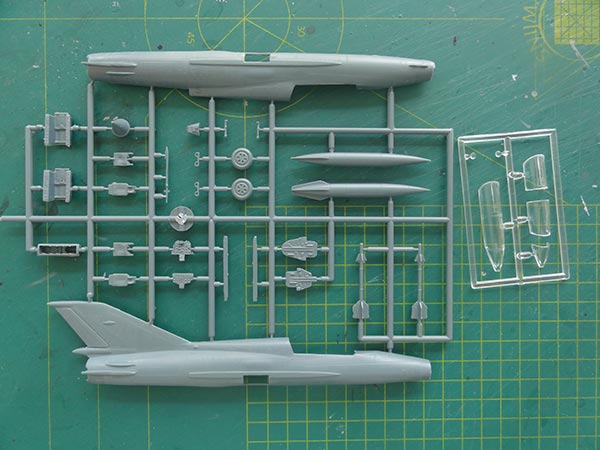
The sprue with the wing parts is similar to those found in RV Model MiG-21 kits. Some parts remain unused.
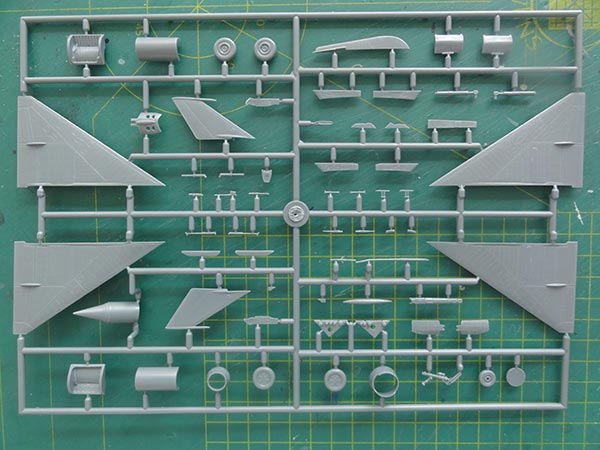
Panel lines look fine and also the details look good. Sprue gates are a bit thick so use a razor saw to separate the parts.
The kit instructions are printed in colour but a bit small and inconsistent. The drawings show air brake part "40" but this is not in the kit as the brakes are moulded closed. Colours are indicated in the KP instructions in Humbrol and Agama paints.
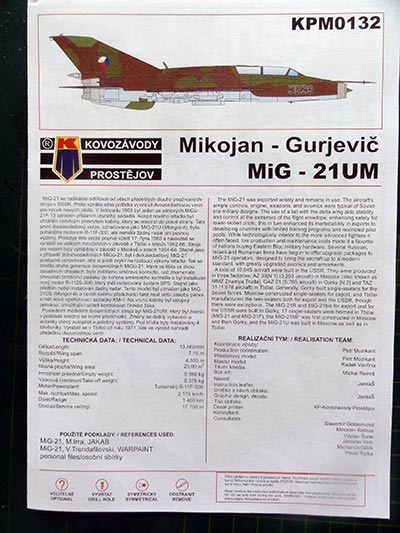

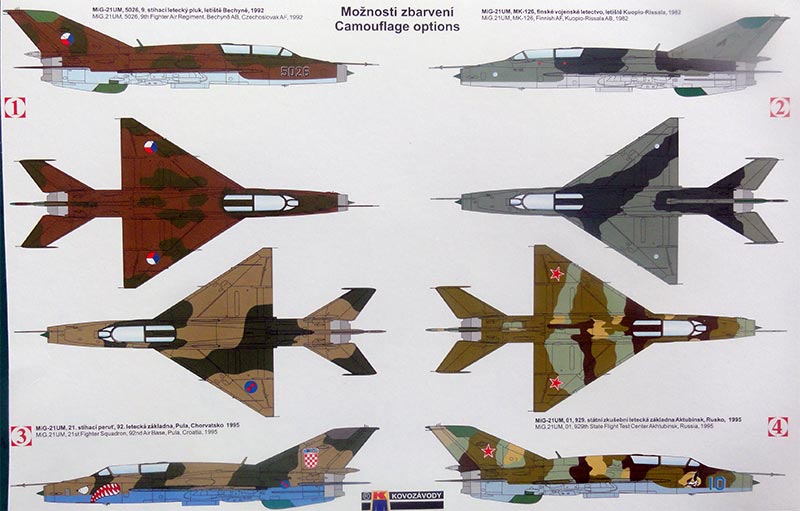
The kit decals are for no less than 4 schemes:
-1- Czechoslovak AF, 9 regiment no "5026" in 1992 camouflage scheme;
-2- Finland AF, coded MK-126 based at Kuopio-Rissala, camo, 1982, (check the scheme if you build this one);
-3- Croatia, 21 fighter squadron of 92 base Pula, camo 1995
-4- Russia, "blue 10" of the test center Akhtubinsk, camouflage 1995
NOTE: the decals tend to break up! So it is strongly recommended to apply decal film coat or gloss varnish over these prior to their usage; as a consequence, cut than out each decal separately; I used spare Eduard MiG-21 stencils decals from other kits as well.
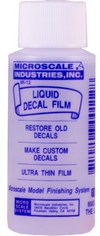
For the "World Air Forces in Plastic" series I opted to make the Croatia scheme as per kit.
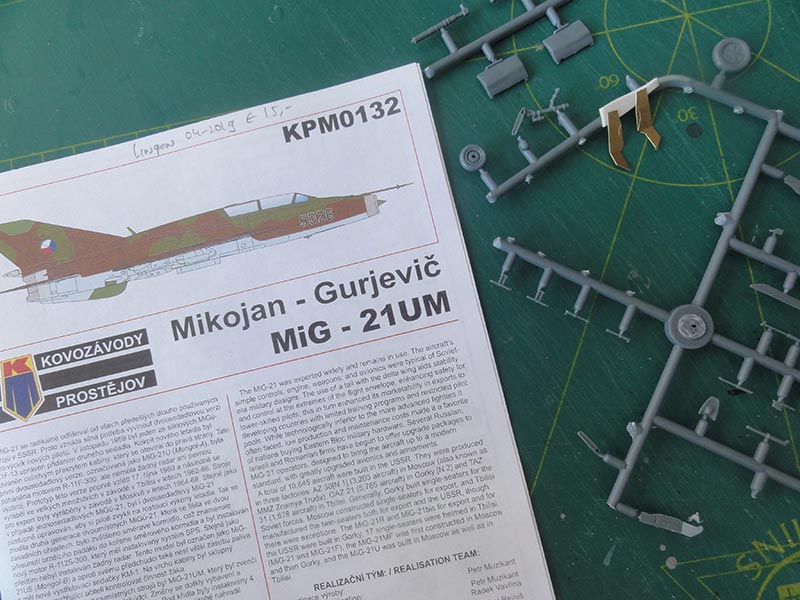
The cockpit colours were painted as indicated. For Croatia in the Soviet standard "emerald green" using AKAN 73005 acrylic. The instrument panels were suggested with the kit decals and black paint.
I had a pair of resin aftermarket PAVLA seats but these did not fit in the cockpit tub so were not used.
What is not provided in the kit is the transparant blast screen aft of the front seat. This was made from scrap.

Main assembly was done first. Putty and sanding is needed in places but the fit is rather good.
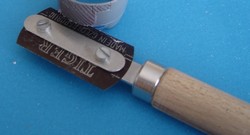
The edges of moving flying surfaces were cut in with a fine razor saw by me for added realism. The recessed panel details look really good.
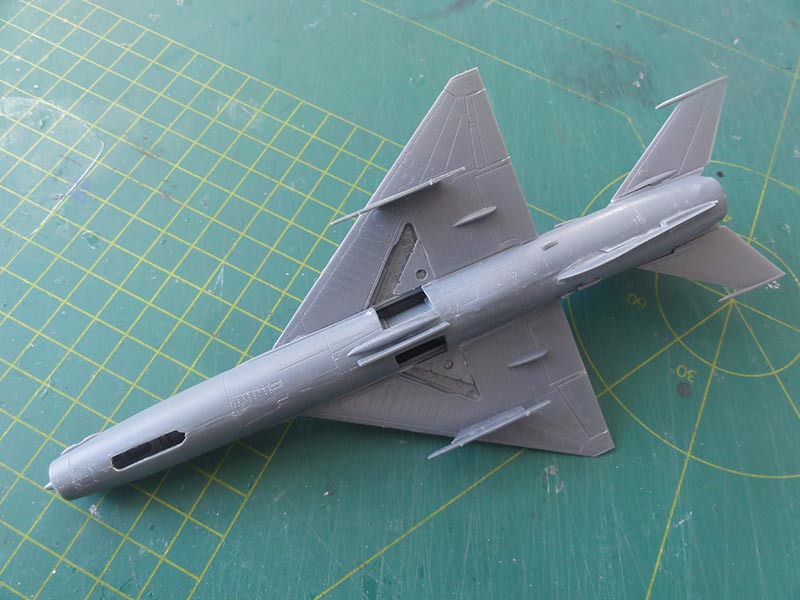

A base grey coat was airbrushed using Revell 75 steingrau Aqua acrylic paint to check for any issues before applying the main paint scheme. It look OK.
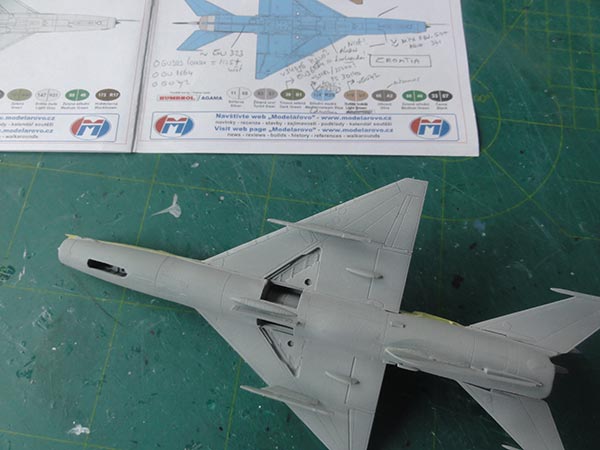
The small wing fences "C" shown in STEP 9 should be made from thin card.
The UM could be fitted with a central 490 liters fuel tank. The tank center line should run parallel with the low fuselage contour. The pylon did not so I made a new central pylon. (note: the two seater UM can not be fitted with tanks on wing pylons).
After the base grey primer coat, for CROATIA these acrylic colours were airbrushed:
- lower blue surfaces Gunze Sangyo H323 + 10% white H1 (which appeared darker than on many others MiG-21's);
- Gunze Sangyo H64 dark green (approx RLM71);
- Revell Aqua 81 "braun".
Some paper masks were made and used between the colour airbrushing.
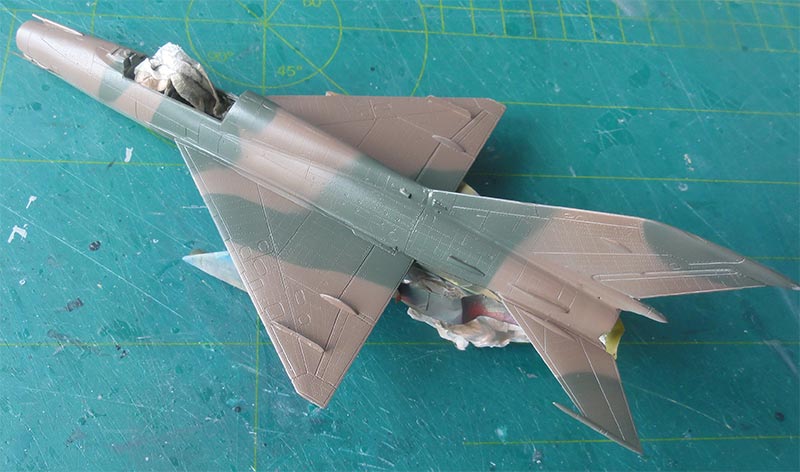
A gloss coat was added before decalling using a mix of Johnson Future / Pledge thinned with 30% alkohol/IPA.
AS NOTED: the decals tend to break up! So it is strongly recommended to apply decal coat or gloss varnish prior to their usage; as a consequence, cut than out each decal separately; I used spare Eduard stencils decals as well.
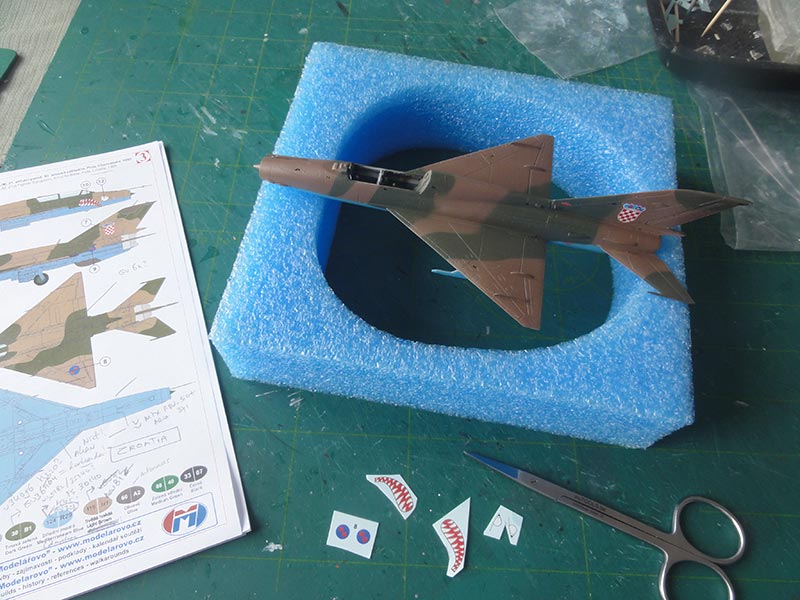
After decalling, undercarriages were fitted with painted medium grey gear struts and green wheel hubs. The bare metal area near the exhaust was painted metal. The anti-collision lights and antenna panels were hand painted. The central fuel tank was set in place.
The typical UM spine UHF antenna is not in the kit but easily made as well as the small IFF "odd rods" aft of the nose gear bay. A pitot was added on the nose in front of the wind screen. The nose pitot/sensor probe was improved and made from a metal needle. I also added a few "static dischargers" at wing tips and upper tail from very thin fishing line.


The model got a couple of semi-dull varnish coats using a mix of Johnson Future / Pledge thinned with 30% alkohol and with a few drops mixed in of Tamiya matting agent "Flat Base" X21 acrylic.

I had purchased a few resin seats of TEMP MODELS and had 2 KM-1 seat left overs. Though not entirely correct for the UM that had KM-1U and KM-11 seat, these were used and the seats got some straps made from tape. Cockpit canopies were set open. A few fixation rods were added, details/ locks in the canopy edges and also the "blast screen" with an internal half round frame between the 2 seats.
CROATIA



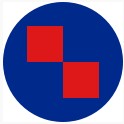
[ area: 56,594 sq.km | population: 4,1 million | capital: Zagreb | GDP USD 15,000 nominal per capita]
Croatia was part after the Second World War of Tito's communist Yugoslav Federation. After the dead of Tito in 1980 there were unrests and after a held referendum Croatia (and Slovenia) declared independence June 25, 1991. This was not accepted by Serbia and local wars with Serbia erupted. This war lasted until 1995 with many ethnic war crimes also in the other republics Serbia, Bosnia Herzegowina, Montenegro, Macedonia.
The Croatia air force "Hrvatsko ratno zrakoplovstvo" is part of the armed forces. In the beginning there were no fixed wing aircraft available as the first armed aircraft was a captured Mi-8 helicopter. A few others helicopters were attained as well. A few "defected Serb / Yugoslav" MiG-21 were the first jet fighters.
Currently PC-9 trainers are used as well as a few Antonov transports and helicopters like the Mi-17, OH-58 and Bell 206. A few fire fighter aircraft are also deployed as are Zlin 242L basic trainers. Still the main fighters are a dozen MiG-21bis though modernized in Romania in 2003 with training done with a few MiG-21UM trainers. End 2021 only some 4 MiG-21bisD fighters were operational. Dassault Rafales are ordered to replaced these with some 10 second hand former French Rafales -C and 2 -B trainers to be operational in 2023.
Main bases are at Zagreb, Zadar and Split.
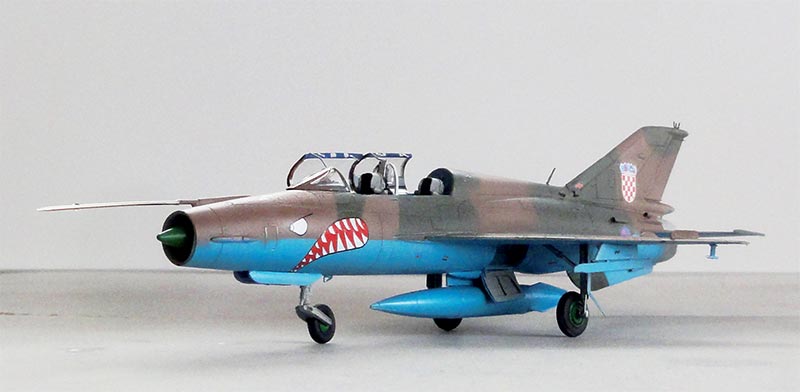
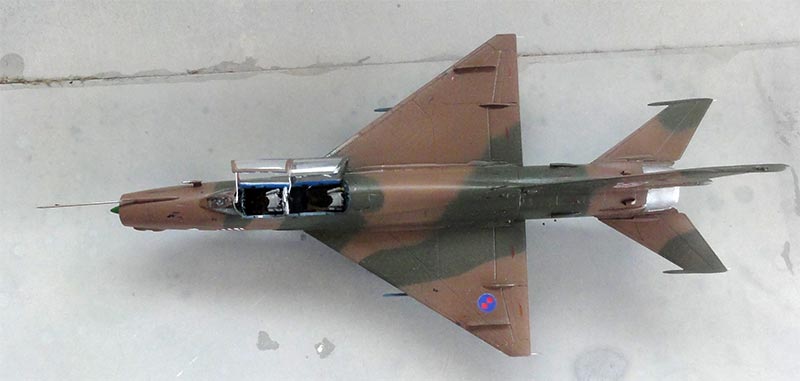
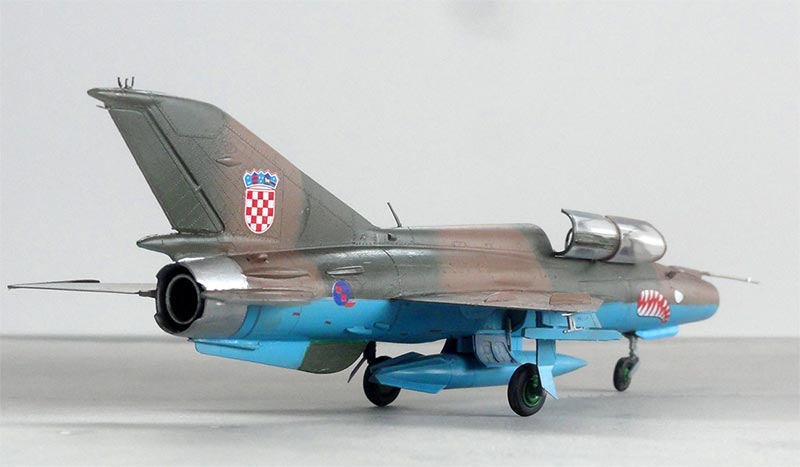
MiG-21UM, no.21 fighter squadron, 92nd Air Base Pula, Croatia in 1995
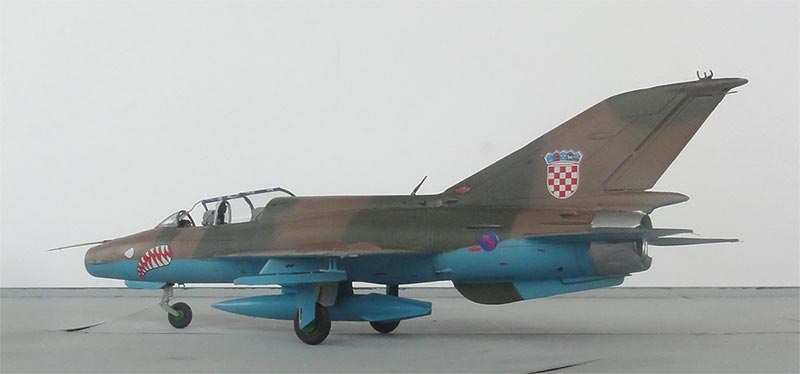
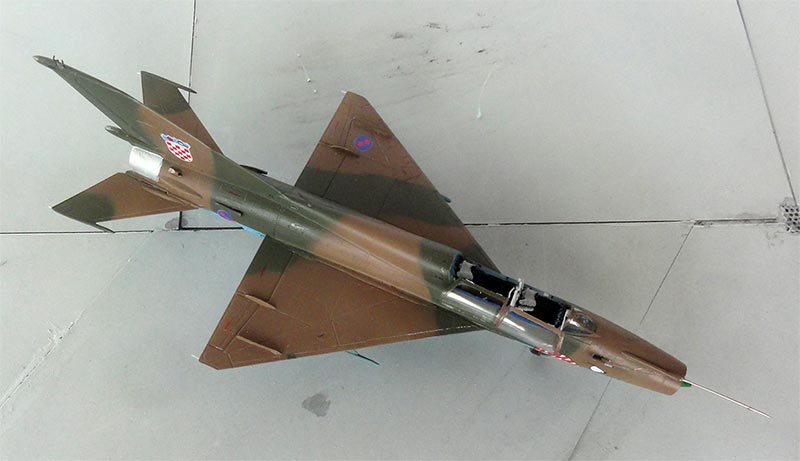
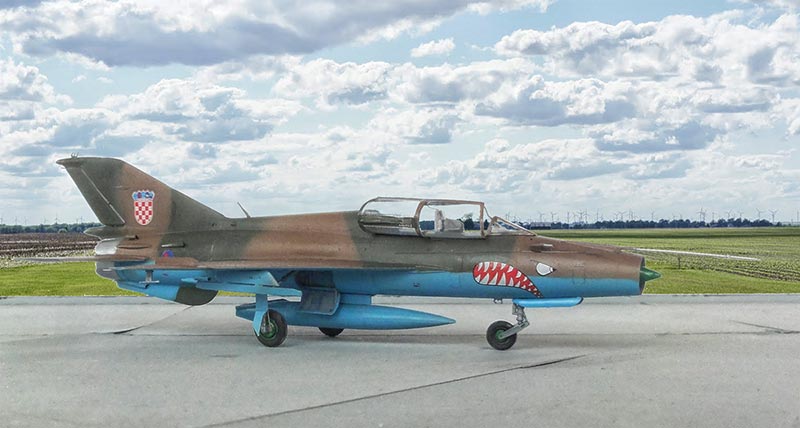
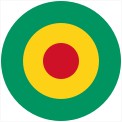
Another Kovozavody Prostejov kit #KPM032 of the two seater trainer MiG-21 UM was made. It would be finished in a scheme of the Republic of Guinea (Conakry). The excellent book "African MiGs" by Tom Cooper and Peter Weinert, volume 1 shows on pages 197-205 extensive information. The particular MiG-21 UM to be made was overhauled in Ukraine approx 2006 along with a few other MiG-21's but the red code is not confirmed.
The kit was made in a similar way as described above.
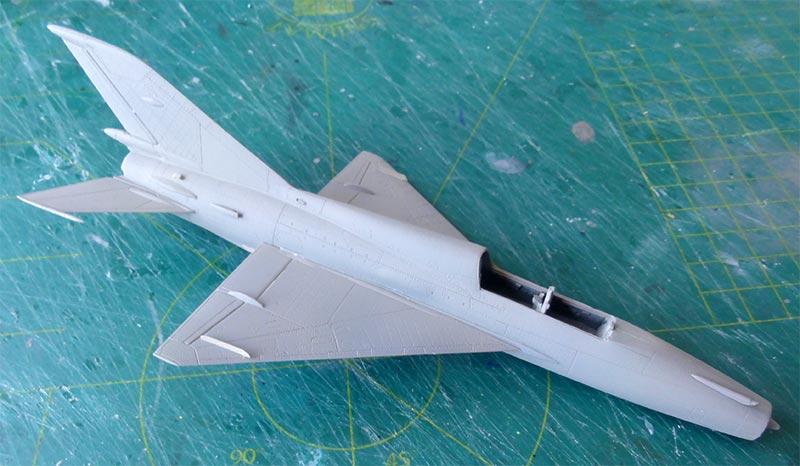

For the camouflage colours these acrylic paints were picked:
- lower surfaces light blue: Hataka A229 acrylic
- green: Revell Aqua 364
- light tan: 90% Revell Aqua 16 + 10% Aqua 05 white
First the lower light blue was airbrushed and after some masking the upper colours airbrushed free-hand.

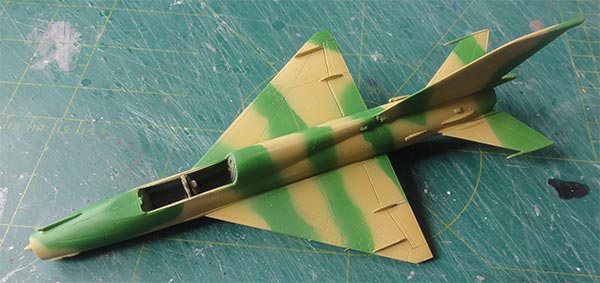
The decals are just a few as it seems no roundels were carried, only a small tail fin flag. The markings were home designed and printed with a special OKI laser printer. Interested in a decal print? Look at my decal page here...

The cockpit was detailed with various bits and the two canopy hoods were set open. Added was the "blast screen" from scrap with an internal half round frame between the 2 seats.
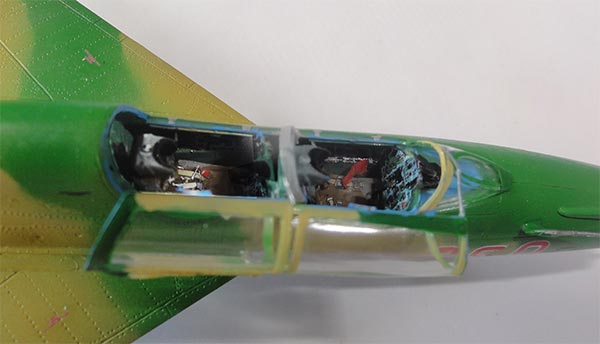
A semi-mat varnish coat was airbrushed to give an even sheen. This was done using a mix of Johnson Future / Pledge thinned with 20% Gunze levelling thinner and with a few drops mixed in of Tamiya matting agent "Flat Base" X21 acrylic.
The pitot tube was made with a long metal needle and installed.
REPUBLIQUE DE GUINEE / GUINEA (Conakry)



[ area: 246,000 sq.km | population: 13,7 million | capital: Conakry | GDP per capita nominal 1,400 USD ]
Guinea was a French colony and in 1958 became independent. The "Force Aerienne de Guinee" obtained Sovjet assistance and a small air arm was set up with 8 MiG-17 Fresco "A", a few MiG-15 UTI trainers and later 6 MiG-17F. From 1987 some MiG-21's followed including a few -UM trainers. As of today, most aircraft are unoperational with just a few helicopters like the Mi-24 "Hind" helicopter flying from the Conakry aeroport.
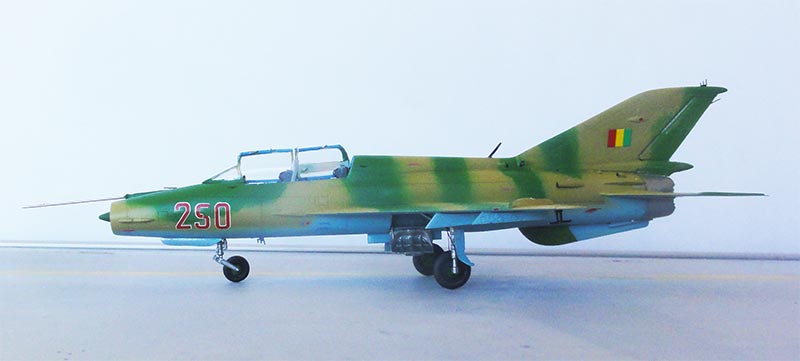
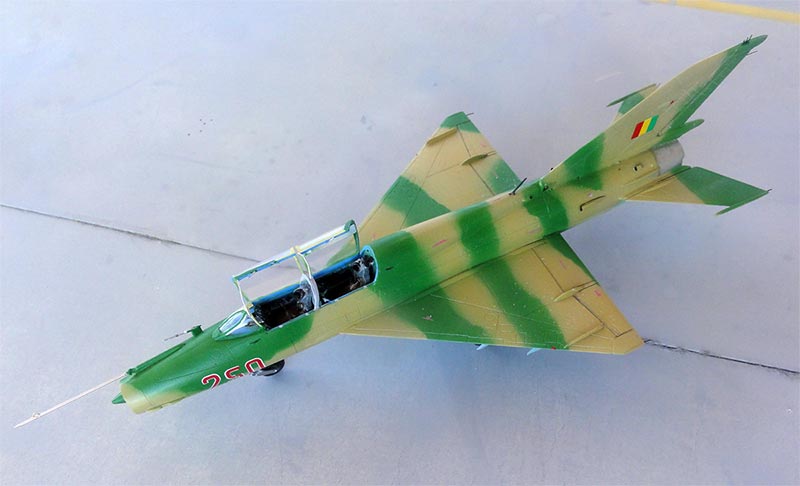
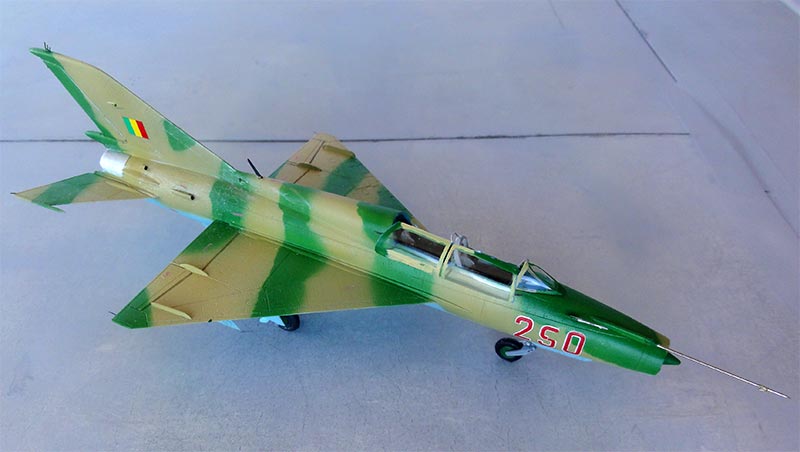
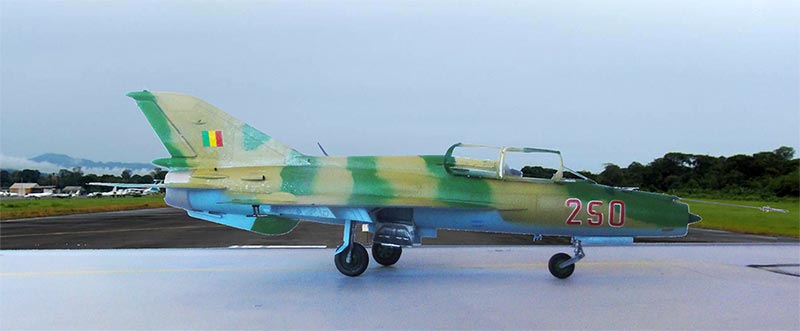
... view at Conakry aeroport internationale, the military section with Mi-24, and Antonov transport and the unserviceable MiG-21's parked behind the hangar....
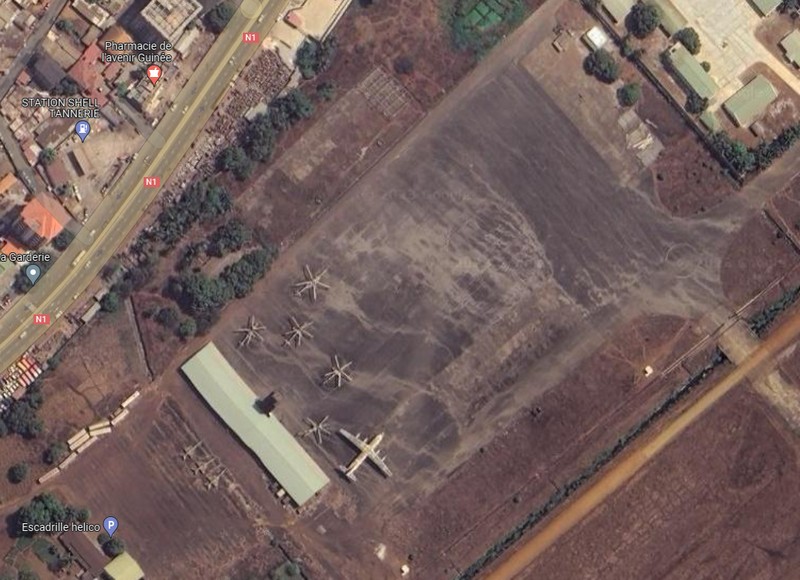
On to next [ Page 11... ]
Back to 1/72 Models.......

(c) Copyright Meindert "designer"/ All rights reserved. Your comments are welcomed by webmaster
First created this page August, 2021